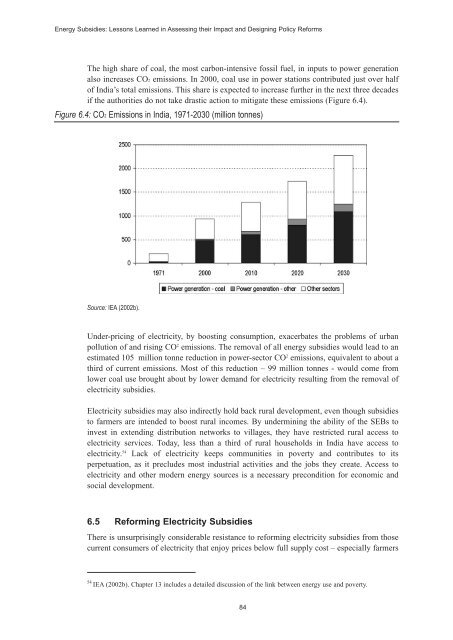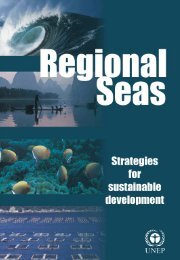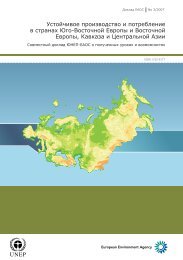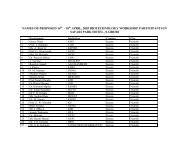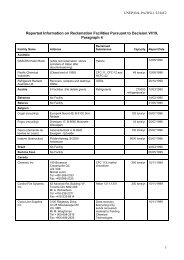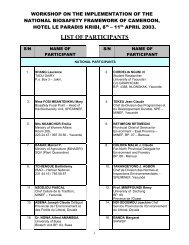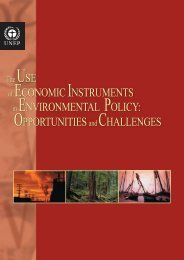Energy Subsidies: Lessons Learned in Assessing their Impact - UNEP
Energy Subsidies: Lessons Learned in Assessing their Impact - UNEP
Energy Subsidies: Lessons Learned in Assessing their Impact - UNEP
You also want an ePaper? Increase the reach of your titles
YUMPU automatically turns print PDFs into web optimized ePapers that Google loves.
<strong>Energy</strong> <strong>Subsidies</strong>: <strong>Lessons</strong> <strong>Learned</strong> <strong>in</strong> Assess<strong>in</strong>g <strong>their</strong> <strong>Impact</strong> and Design<strong>in</strong>g Policy Reforms<br />
The high share of coal, the most carbon-<strong>in</strong>tensive fossil fuel, <strong>in</strong> <strong>in</strong>puts to power generation<br />
also <strong>in</strong>creases CO2 emissions. In 2000, coal use <strong>in</strong> power stations contributed just over half<br />
of India’s total emissions. This share is expected to <strong>in</strong>crease further <strong>in</strong> the next three decades<br />
if the authorities do not take drastic action to mitigate these emissions (Figure 6.4).<br />
Figure 6.4: CO2 Emissions <strong>in</strong> India, 1971-2030 (million tonnes)<br />
Source: IEA (2002b).<br />
Under-pric<strong>in</strong>g of electricity, by boost<strong>in</strong>g consumption, exacerbates the problems of urban<br />
pollution of and ris<strong>in</strong>g CO 2 emissions. The removal of all energy subsidies would lead to an<br />
estimated 105 million tonne reduction <strong>in</strong> power-sector CO 2 emissions, equivalent to about a<br />
third of current emissions. Most of this reduction – 99 million tonnes - would come from<br />
lower coal use brought about by lower demand for electricity result<strong>in</strong>g from the removal of<br />
electricity subsidies.<br />
Electricity subsidies may also <strong>in</strong>directly hold back rural development, even though subsidies<br />
to farmers are <strong>in</strong>tended to boost rural <strong>in</strong>comes. By underm<strong>in</strong><strong>in</strong>g the ability of the SEBs to<br />
<strong>in</strong>vest <strong>in</strong> extend<strong>in</strong>g distribution networks to villages, they have restricted rural access to<br />
electricity services. Today, less than a third of rural households <strong>in</strong> India have access to<br />
electricity. 54 Lack of electricity keeps communities <strong>in</strong> poverty and contributes to its<br />
perpetuation, as it precludes most <strong>in</strong>dustrial activities and the jobs they create. Access to<br />
electricity and other modern energy sources is a necessary precondition for economic and<br />
social development.<br />
6.5 Reform<strong>in</strong>g Electricity <strong>Subsidies</strong><br />
There is unsurpris<strong>in</strong>gly considerable resistance to reform<strong>in</strong>g electricity subsidies from those<br />
current consumers of electricity that enjoy prices below full supply cost – especially farmers<br />
54<br />
IEA (2002b). Chapter 13 <strong>in</strong>cludes a detailed discussion of the l<strong>in</strong>k between energy use and poverty.<br />
84


